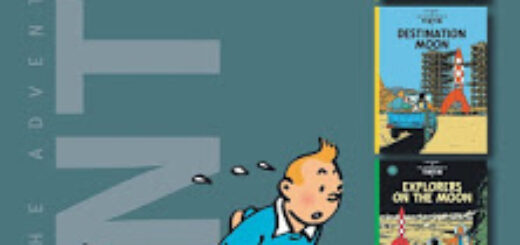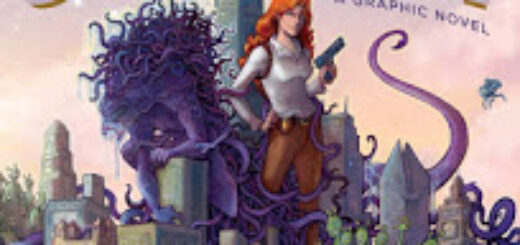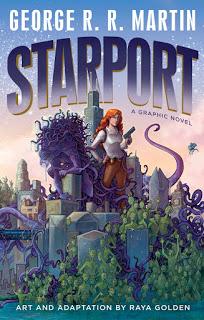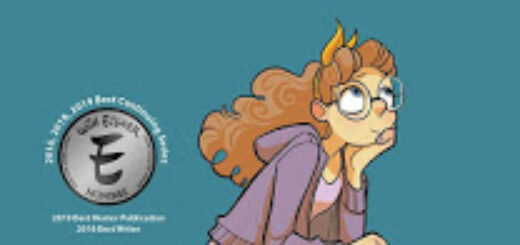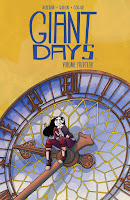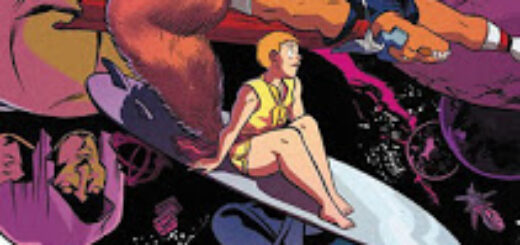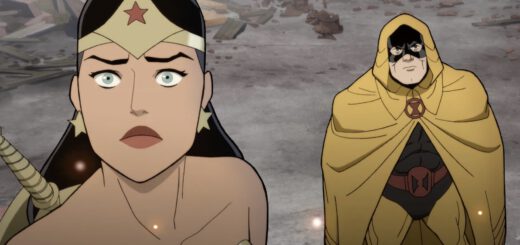Tonight’s Golden State Warriors vs. New Orleans Pelicans Game Guest Stars the Avengers
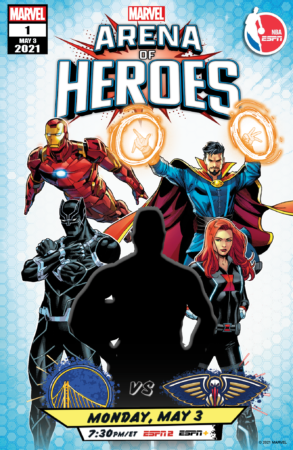 ESPN and Marvel announced a groundbreaking collaboration today to launch the first-ever Marvel-inspired alternate presentation for the Golden State Warriors vs. New Orleans Pelicans game on Monday, May 3. The exclusive alternate presentation, NBA Special Edition Presented by State Farm: Marvel’s Arena of Heroes, will start at 7:30 p.m. ET on ESPN2, ESPN+ and ESPN Deportes with the traditional game telecast on ESPN. This marks ESPN’s second live NBA game on ESPN+.
ESPN and Marvel announced a groundbreaking collaboration today to launch the first-ever Marvel-inspired alternate presentation for the Golden State Warriors vs. New Orleans Pelicans game on Monday, May 3. The exclusive alternate presentation, NBA Special Edition Presented by State Farm: Marvel’s Arena of Heroes, will start at 7:30 p.m. ET on ESPN2, ESPN+ and ESPN Deportes with the traditional game telecast on ESPN. This marks ESPN’s second live NBA game on ESPN+.
The latest development in Marvel and ESPN’s long history of sports content collaboration, the telecast will integrate elements from an original Marvel story and iconic characters including Iron Man, Black Panther, Captain Marvel, Captain America, Black Widow, and Doctor Strange throughout the live game, including 3D virtual characters, custom graphics and animation packages.
After a narrow victory over an invading alien army, the Avengers receive an ominous threat from the enemy who vows to return in greater numbers and force. The Black Panther and Iron Man quickly realize they will need more help and form a plan to expand their ranks to fight this impending threat. Recognizing the superior physical abilities, agility, and tenacity of Earth’s greatest athletes, the Avengers will hold a series of contests where the winners earn the right to train and fight alongside them as Marvel’s Champions! The Avengers will begin their recruitment with the NBA elite and observe the battle between the Warriors and the Pelicans, focusing on three star players from each team.
Golden State Warriors:
- Stephen Curry, three-time NBA Champion and two-time NBA MVP;
- Draymond Green, three-time NBA Champion;
- Andrew Wiggins, 2014-15 NBA Rookie of the Year.
New Orleans Pelicans:
- Zion Williamson, 2019 NBA Draft top pick;
- Brandon Ingram, 2019-20 NBA Most Improved Player;
- Lonzo Ball, 2017-18 NBA All-Rookie Second Team.
Fans will be able to follow along as these athletes are put to the test, gaining Marvel Hero Points for their achievements and performance during the game. The player with the most Marvel Hero Points on the winning team will be crowned as Marvel’s first Champion following the NBA Special Edition Presented by State Farm: Marvel’s Arena of Heroes.
Scoring system:
- One Marvel Hero Point will be awarded for every point, rebound, assist, steal and block;
- One Marvel Hero Point will be deducted for every missed field goal, free throw or turnover.
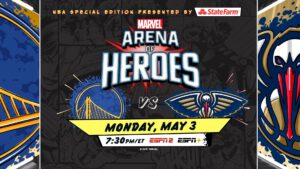 ESPN commentators Ryan Ruocco and Richard Jefferson will provide commentary in a fully customized Marvel-themed studio at ESPN’s Bristol, Conn. campus. Additionally , the special presentation will include commentary and analysis from Marvel expert Angélique Roché.
ESPN commentators Ryan Ruocco and Richard Jefferson will provide commentary in a fully customized Marvel-themed studio at ESPN’s Bristol, Conn. campus. Additionally , the special presentation will include commentary and analysis from Marvel expert Angélique Roché.
“Marvel and ESPN have brought the worlds of sports and Super Heroes together for years through comics, documentaries, and other stories celebrating athletes and their extraordinary abilities,” said Mike Pasciullo, vice president, marketing and communications, Marvel Entertainment. “The new Marvel’s Arena of Heroes telecast will be the first of its kind to bring Marvel’s storytelling directly to the real-time experience of a NBA game, and we are excited for fans to be able to watch their favorite players through the lens of Marvel’s mightiest heroes.”
“We’re eager for fans to experience this unique, innovative presentation that will pair Marvel and ESPN’s exceptional storytelling and production,” said Matt Kenny, ESPN vice president, programming and acquisitions. “We are proud to showcase the ‘larger than life’ abilities of these NBA stars in a manner in which only Disney and Marvel can deliver.”
“Marvel and ESPN have brought the worlds of sports and Super Heroes together for years through comics, documentaries, and other stories celebrating athletes and their extraordinary abilities,” said Mike Pasciullo, vice president, marketing and communications, Marvel Entertainment. “The new Marvel’s Arena of Heroes telecast will be the first of its kind to bring Marvel’s storytelling directly to the real-time experience of a NBA game, and we are excited for fans to be able to watch their favorite players through the lens of Marvel’s mightiest heroes.”
“We are thrilled to work alongside ESPN and Marvel to present fans with the first-ever Marvel-inspired alternate NBA telecast,” said David Denenberg, NBA senior vice president, global media distribution & business affairs. “This fun and innovative game presentation builds upon our goal of providing personalized and compelling viewing options for our fans.”
The traditional telecast of the Warriors vs. Pelicans game will be exclusive in the New Orleans market and will air simultaneously on ESPN. Dave Pasch will call the action with analyst Mark Jackson and reporter Cassidy Hubbarth on site in New Orleans. Both the NBA Special Edition Presented by State Farm: Marvel’s Arena of Heroes alternate presentation and the traditional game telecast will stream via the ESPN App.

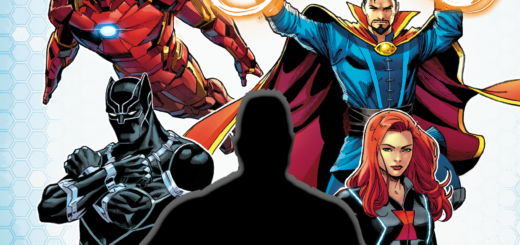

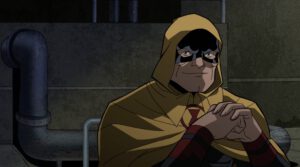 Matthew Mercer, who provides the voice of Hourman in the next entry in the DC Universe Movies canon, Justice Society: World War II. Also attached is an image of the character.
Matthew Mercer, who provides the voice of Hourman in the next entry in the DC Universe Movies canon, Justice Society: World War II. Also attached is an image of the character.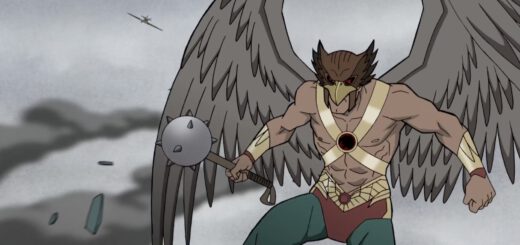
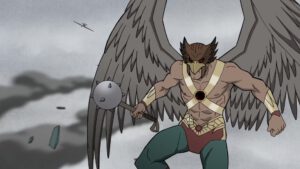 Omid Abtahi is currently commanding the fanboy scene with featured roles in The Mandalorian and American Gods, complementing his notable past roles in Argo, Better Call Saul, and Damien, as well as voice performances in the World of Warcraft and Call of Duty videogame franchises. Justice Society: World War II represents his DC Universe Movies debut.
Omid Abtahi is currently commanding the fanboy scene with featured roles in The Mandalorian and American Gods, complementing his notable past roles in Argo, Better Call Saul, and Damien, as well as voice performances in the World of Warcraft and Call of Duty videogame franchises. Justice Society: World War II represents his DC Universe Movies debut.